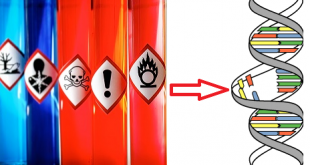The genomes of viruses and prokaryotes are very simple structures, although those of viruses show remarkable diversity (for a review see Dimmock et al. 2001). Most viruses have a single linear or circular genome but a few, such as reoviruses, bacteriophage φ6 and some plant viruses, have segmented RNA genomes.
For a long time it was believed that all eubacterial genomes consisted of a single circular chromosome.
Best safe and secure cloud storage with password protection
Get Envato Elements, Prime Video, Hotstar and Netflix For Free
Best Money Earning Website 100$ Day
#1 Top ranking article submission website
- However, linear chromosomes have been found in Borrelia sp., Streptomyces sp. and Rhodococcus fascians and mapping suggests that Coxiella burnetii also has a linear genome.
- Two chromosomes have been found in a number of bacteria including Rhodobacter spheroides, Brucella melitensis, Leptospira interrogans and Agrobacterium tumefaciens (Cole & Saint Girons 1994).
- In the case of Agrobacterium, there is one circular chromosome and one non-homologous linear chromosome (Goodner et al. 1999).
- Linear plasmids have been found in Borrelia sp. and Streptomyces sp. as well as a number of bacteria with circular chromosomes (Hinnebush & Tilley 1993).
- Borrelia has a very complex plasmid content with 12 linear molecules and nine circular molecules (Casjens et al. 2000).
Bacterial genomes lack the centromeres found in eukaryotic chromosomes although there may be a partitioning system based on membrane adherence. Duplication of the genomes is initiated at an origin of replication and may proceed unidirectionally. The structure of the origin of replication, the oriC locus, has been extensively studied in a range of bacteria and found to consist essentially of the same group of genes in a nearly identical order (Cole & Saint Girons 1994). The oriC locus is defined as a region harbouring the dnaA (DNA initiation) or gyrB (B subunit of DNA gyrase) genes linked to a ribosomal RNA operon.
Many bacterial and viral genomes are circular or can adopt a circular conformation for the purposes of replication. However, those viral and bacterial genomes which retain a linear configuration need a special mechanism to replicate the ends of the chromosome (see Box 2.1). A number of different strategies for replicating the ends of linear molecules have been adopted by viruses (see Dimmock et al. 2001) but in bacteria there are two basic mechanisms (Volff & Altenbuchner 2000).
- In Borrelia, the chromosomes have covalently closed hairpin structures at their termini. Such structures are also found in Borrelia plasmids, Escherichia coli phage N15, poxviruses and linear mitochondrial DNA molecules in the yeasts Williopsis and Pichia. Exactly how these hairpin structures facilitate replication of the ends of the molecule is not known.
- By contrast, in Streptomyces, the linear molecules have proteins bound to the 5′ ends of the DNA and such proteins are also found in adenoviruses, and a number of bacteriophages and fungal and plant mitochondrial plasmids. These terminal proteins probably are involved in the completion of replication. In addition, Streptomyces linear replicons have palindromic sequences and inverted repeats at their termini.
The bacterial genomes that have been completely sequenced have sizes ranging from 0.6 to 7.6 Mb. The difference in size between the smallest and the largest is not a result of introns for these are rare in prokaryotes (Edgell et al. 2000; Martinez-Abarca & Toro 2000). Nor is it a result of repeated DNA. Analysis of the kinetics of reassociation of denatured bacterial DNA did not indicate the presence of repeated DNA in E. coli (Britten & Kohne 1968) and only small amounts have been detected in all of the bacterial genomes that have been sequenced. In both Mycoplasma genitalium (0.58 Mb) and E. coli (4.6 Mb) about 90% of the genome is dedicated to protein-coding genes. Therefore the differences in size reflect the number of genes carried.
This begs the question as to the minimal genome size possible for a bacterium. The current view is about 300 genes (Mushegian 1999; see also p. 114). In Borrelia the small genome size (1.5 Mb) may be complemented by the high plasmid content (see above) which constitutes 0.67 Mb. These plasmids carry 535 genes, many of which have no counterparts in other organisms, suggesting that they perform specialized functions (Casjens et al. 2000).
References & Other Links
Compiler’s Note: For the emergency study purposes, this article has been completely excerpted from a portion of Primrose & Twyman’s book entitled Principles of Genome Analysis & Genomics (Third Edition).
Anyone who is revising this article is suggested to make a thorough look-over and change and amalgam in places where they are necessary.
- Principles of Genome Analysis & Genomics (Third Edition) by Primrose & Twyman.
Revised By
- Abulais Shomrat on 15th June, 2021.
 Plantlet The Blogging Platform of Department of Botany, University of Dhaka
Plantlet The Blogging Platform of Department of Botany, University of Dhaka




